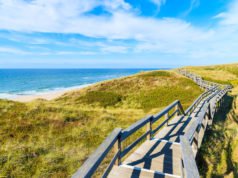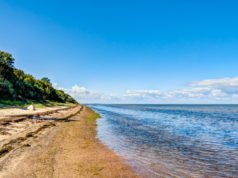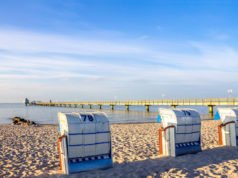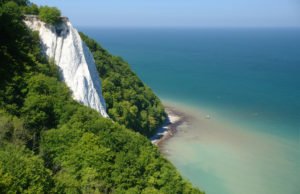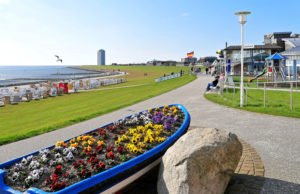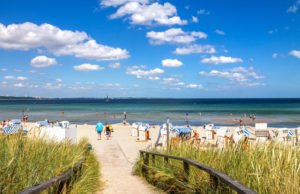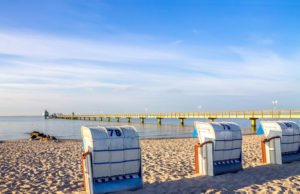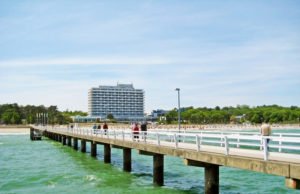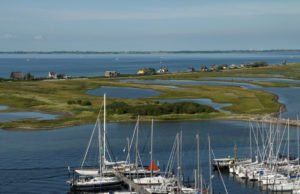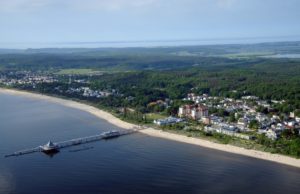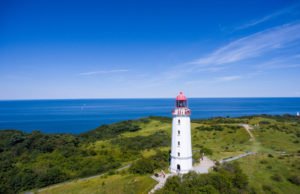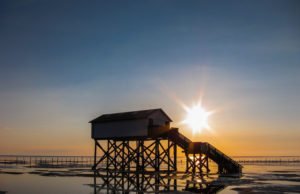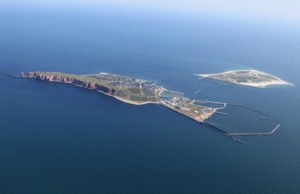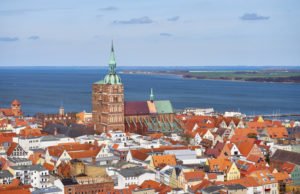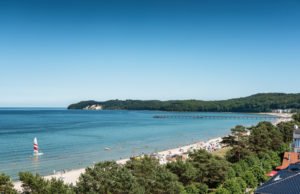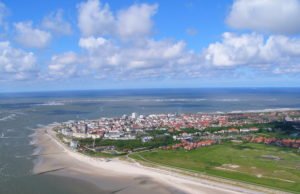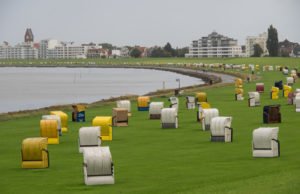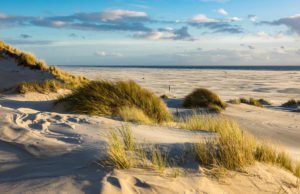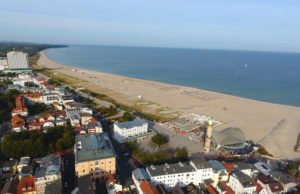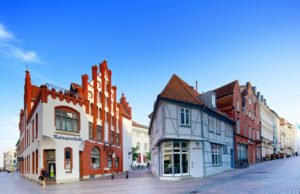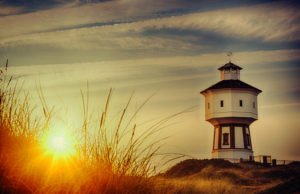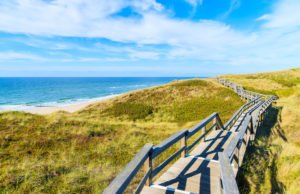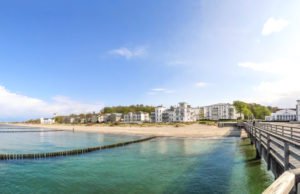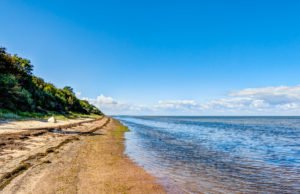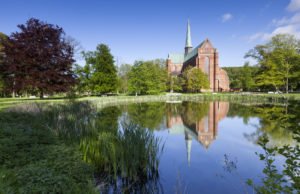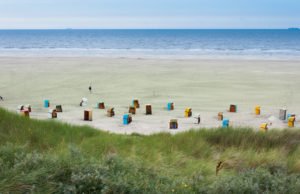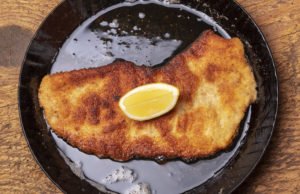
Bad Doberan is a town in north-eastern Germany, situated in heavily-developed Rostock within Mecklenburg-Western Pomerania, and is fifteen kilometres west of Rostock’s centre. Sitting among stunning beech forests at a distance of only six km from the Baltic Sea, it’s ideally placed for a city break with access to sea and countryside. There are plenty of restaurants and bars, with interesting and quirky artisan shops, rather than just the usual bland chain stores.
A Little Background
The town’s name, originally Dobran, probably came from the Slavic word for good, but legend has it that during the monastery’s construction, a deer startled some swans, who screamed “dobre dobre”. It’s said that the monks adopted the name, and this agreeable fantasy is still celebrated by way of the swans and deer on the town’s present coat-of-arms. Bad, meaning spa or resort, was added in 1921 and describes perfectly what the town has to offer.
The Munster
Bad Doberan was also once the site of an important Cistercian monastery, and now boasts an impressive red-brick Gothic Munster. Set in its own attractive and peaceful grounds, its location outside the centre has protected the cathedral from damage in various wars over the centuries, although the fascinating astronomical clock hasn’t worked since the thirty-year war. So for around just three euros, you can still feast your eyes on riches like the stained glass, particularly the medieval upper window showing Mary and John the Evangelist, or the double-sided altar cross.
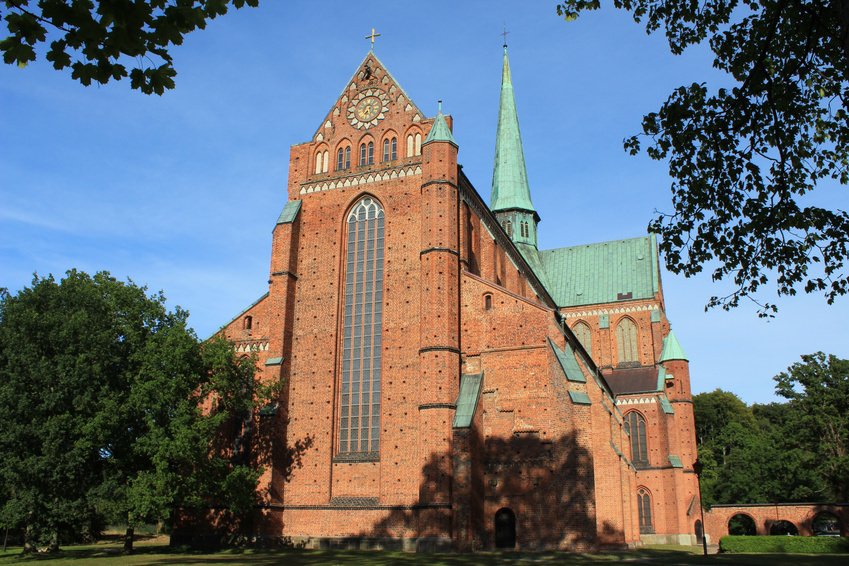
One of the oldest churches in the north and the oldest surviving monastery in Germany, this thirteenth-century treasure is unusual in being Catholic in a Lutheran part of the country. Regional rulers of note were buried here and there are sizeable tombs to view, including the monument and grave of Sweden’s King Alfred. Time your visit to catch an organ recital and spend a relaxing and pensive half day here.
Around Bad Doberan
Other architecture varies in style, with classicist buildings dating from the early nineteenth century. The mid-twentieth century saw the addition of Soviet blocks during the time of the German Democratic Republic, but at the end of this period, renovation swiftly followed and the town embraced its natural assets. There is now a rehabilitation clinic at Moorbad and the Median clinic in Heiligendamm, and it became a healing spa in the year 2000.
A Ducal Retreat
Site of one of the earliest Mecklenburg settlements, Bad Doberan later became the summer residence for the dukes of Mecklenburg, and if you want to know how they spent their time, you can tour the hunting lodge & home of Duke Friedrich Franz III. Hidden away in the forest, Jagdschloss Gelbensande contains twelve restored chambers and some wonderful fireplaces. You can inspect the original plans and then while away some time in the very pleasant café, or you might prefer to visit when a concert or event is in progress.
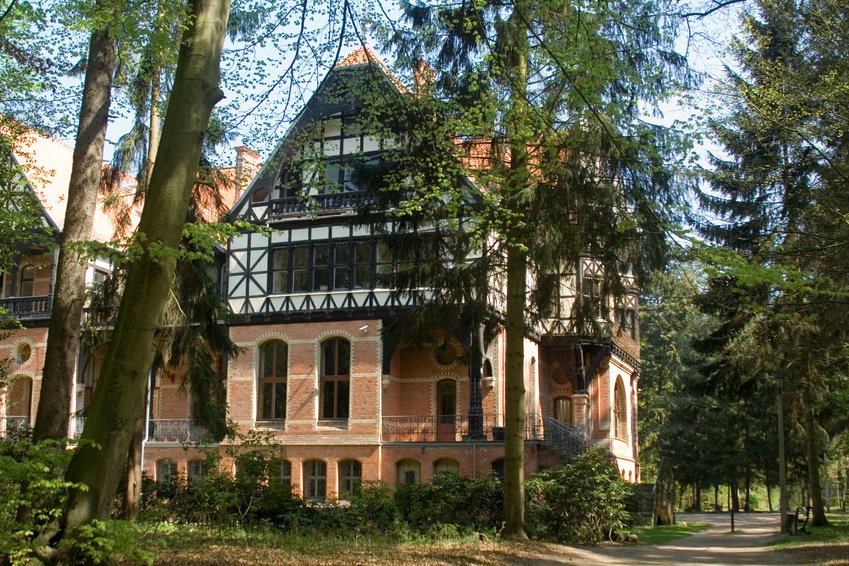
Badermuseum
As its name suggests, the Badermuseum (City and Bath Museum) explores the history of health-giving spa culture and the first seaside resort here. The late-Victorian house, built by the renowned architect, Gotthilf Ludwig Möckel as his own residence, is an attraction in itself and well worth the modest entrance fee. For more fine architecture, take a stroll along Goethestrasse and admire its mansions, products of the eighteenth and nineteenth centuries.
The Mollibahn
Train buffs will love the 1886-established Molli Steam Train! The Mollibahn boasts a rare track gauge of 900mm and an informative museum. Fares vary according to distance and service, but start low. The engine trundles between Bad Doberan and Kühlungsborn, where there is a café in an opened-up railway carriage.
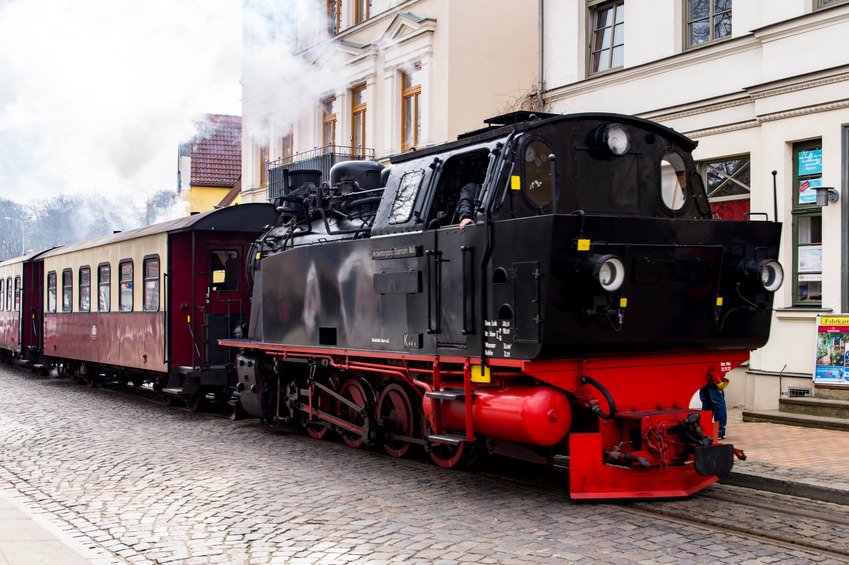
There are more stops along the way where you can hop off to explore, and there is an on-board café. You can transfer from the mainline, and bikes can be stored too. Stand outside on the viewing platforms at the carriage-ends for the best view, particularly from the last coach. The little locomotive chuffs right through the centre of town, with road traffic and pedestrians treating it with the respect it deserves.
Kühlungsborn
You might want to sample the seaside (called Seebad) when the train calls at the traditional resort and spa of Kühlungsborn, the biggest in Mecklenburg and one of the earliest in Germany, established in the 1860s. Walk over its sands and new promenade for a good view of the Baltic, discover its rebuilt pier, or explore the surrounding woods, the Kühlung, if you want a chance to spot deer. The remaining East German watchtower will remind you of recent history, while the thirteenth-century St John’s Church, made of fieldstones and brick, will give you a longer sense of the past.
Helligendamm
If you prefer to stay out of town and experience the Baltic coast, both Kühlungsborn and Bad Doberan’s popular seaside district of Heiligendamm offer a good choice of accommodation, from luxury hotels to villas and apartments. Heiligendamm with its kind climate, perched on the cliff edge, is Germany’s oldest resort and has been fashionable since the nineteenth century. In its heyday, neo-classical buildings along the sea front led to it being called White City by the Sea.
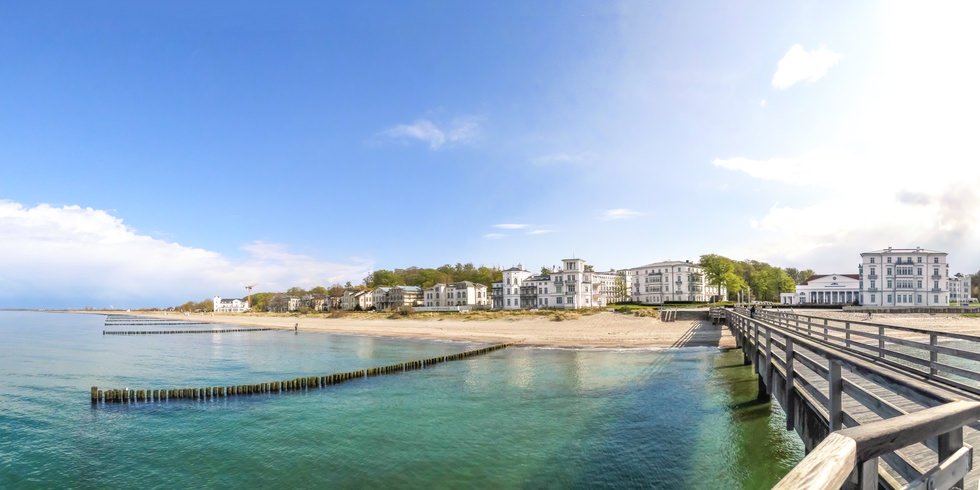
Kamp
In the same area and era, the three-sided green space Kamp attracted the in-crowd of the day, and nowadays hosts various events and activities. Created in 1800 and originally a common, it is surrounded by linden trees and boasts two Chinese-style pavilions, one of which is an art gallery.
What to Eat
As you might expect from somewhere so close to the sea, fish-based dishes are a regional delicacy, either served simply or as part of a recipe, with herring, mackerel and flounder all favourites. Roast ribs, wild boar, venison and Baltic buckthorn are popular alternatives, while bread topped by home-made sausages is a common snack, followed by a tantalising selection of desserts and cakes.

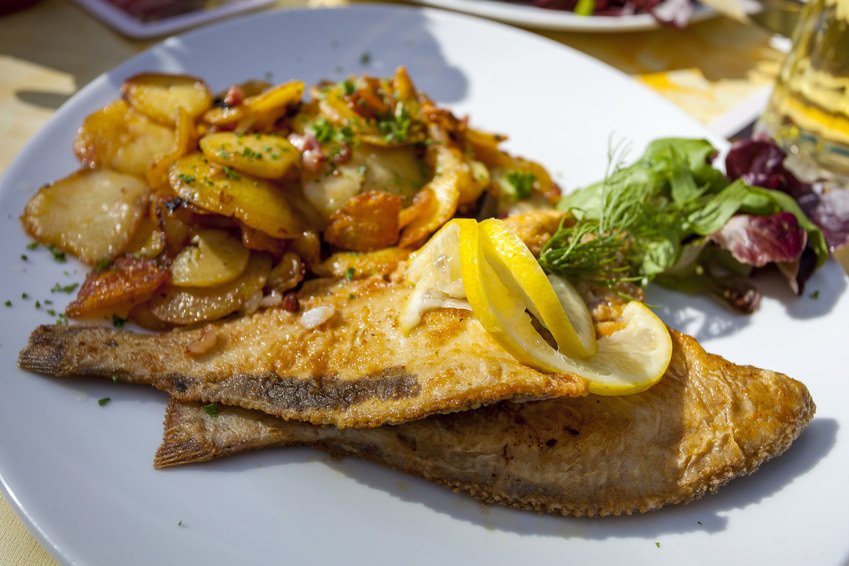
In fact, food in north eastern Germany generally is a hearty affair, and includes Eastern European staples too. Meat, root vegetables (especially potatoes), cabbage and other green vegetables feature heavily, together with mushrooms and beans. Apples, raisins, pears and plums provide seasoning, or accompany roast dishes. Wurst (sausages and cold meat) and Eisbein (pickled ham) are available everywhere, while Kasseler Rippchen are smoked pork chops that can be eaten hot or cold.

Locally Brewed Beers
Wash your meal down with a local beer – after all, they have been brewing them here for seven hundred years, so they should know what they’re doing. Brewers and inns sell their own barley ale, and a tour of Rostock’s Brauhaus am Lohberg zu Wismar brewery will educate you on colours, types and process. And just to be sure that you leave better-informed, tastings are included!
Where to Eat
In Kühlungsborn, try the Hotel am Strand for steamed fish, or indulge in the German version of fast food, pommes (chips) and currywurst (sausage with curry-seasoned sauce). In the same district, the Ostsee Brauhaus AG Hotel serves grills and pork schnitzel, the latter usually being tenderised meat cooked in oil or fat.
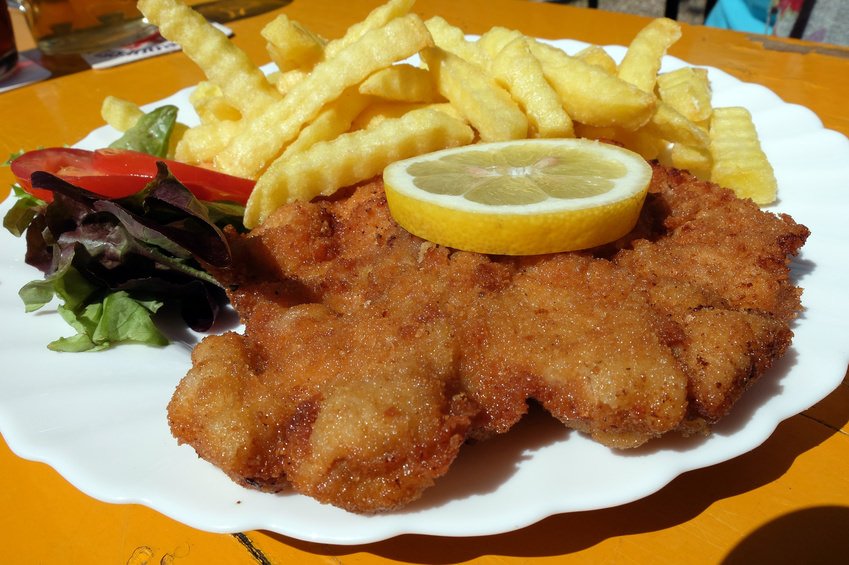
Non-carnivores needn’t despair, however, as there’s a vegetarian restaurant in the same vicinity, and another in Rostock, plus many eateries with international menus. In Bad Doberan itself, the Kamp-Theatre’s dining facilities are centrally situated, and the nearby Ratskeller is reliable and cheap.
After Dark
Your choice of night life will depend on your tastes. Café Zikke is a lively bar selling food in the town, or if you’re keen to soak up the atmosphere of a beach bar while you’re on holiday, head out to Heilendamm for Deck. And of course, pubs that keep late hours, like Rostock’s HonkyTonk-Musikbar, are always welcome at the end of the evening. Dance clubs, cocktail establishments and live music venues ensure that there is something for everyone.
Transport
If you didn’t arrive by rail, you’ll find the Bahnhof (train station) at the southern end of Bad Doberan. Of course, for local trips, there is always the Mollibahn! Local buses serve the surrounding area, and longer journeys start from the main bus station. Taxis are readily available, while hiring a car or bike will give you the freedom to explore the area outside the town. Take advantage of the proximity of the coast to catch a boat or ferry for a short trip, or a leisurely way of travelling.
Where to Stay
Pop into the tourist office on Alexandrinenplatz if you need help with accommodation, including private rooms. The City Hotel is close by, or Friedrich-Franz Palais, with a good on-site restaurant, is another option at August-Bebel-Str 2. For those on a budget, the youth hostel is at the western end of town at Am Tempelberg, or there are several pensions. The two coastal resorts provide plenty of agreeable alternatives, including apartments.
When to Go
For the best weather, visit between June and early September, especially if you yearn for a beach holiday. Christmas and New Year are other busy periods, or you might prefer to plan your stay around what’s happening locally. The annual Zappanale Festival celebrates and remembers the life and work of Frank Zappa in mid-July, with the Red Sun music event taking place just before that.
So Much to Do!
Art lovers can head for May’s Plein Air, while June’s crowded schedule includes the Dragon Grand Prix for sailing, volleyball’s Smart Super Cup, food tastings and music at the Genussmarkt, and a Season Awakening celebration early in the month. All of these take place either in Bad Doberan or the surrounding region. Whatever you choose to do, Bad Doberan is a great place to get to know, and you will have a memorable break.


